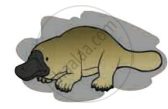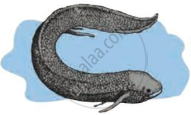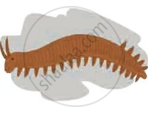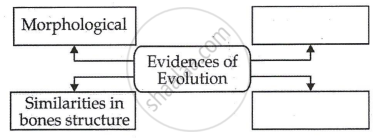Advertisements
Advertisements
प्रश्न
Write the names of those animals in whom the human body organs are functioning.
उत्तर
It is useful in monkeys and other animals like rabbits, cows, horses, etc. for movement of the ear pinna.
संबंधित प्रश्न
State the connecting links between Peripatus with Annelida and Arthopoda.
Give two examples of vestigial organs in human beings and plants.
(a) Select the homologous structures from the combinations given below:
(i) Forelimbs of whales and bats
(ii) Tuber of potato and sweet potato
(iii) Eyes of octopus and mammals
(iv) Thorns of Bougainvillea and tendrils of Cucurbita
(b) State the kind of evolution they represent.
(a) Select the analogous structures from the combination given below:
(i) Forelimbs of whales and bats
(ii) Eyes of octopus and mammals
(iii) Tuber of sweet potato and potato
(iv) Tuber of Bougainvillea and tendrils of Cucurbita
(b) State the kind of evolution they represent
Explain with an example for the given, how the following provides evidence in favor of evolution in organisms :
Homologous organs
Differentiate between analogy and homology giving one example each of plant and animal respectively.
How analogy and homology considered as an evidence in support of evolution ?
Four students A, B, C and D reported the following set of organs to be homologous. Who is correct ?
(A) Wings of a bat and a butterfly
(B) Wings of a pigeon and a bat
(C) Wings of a pigeon and a butterfly
(D) Forelimbs of cow, a duck and a lizard
Four students P, Q, R and S differently reported the following set of organs to be analogous :
P. Forelimb of a frog and forelimb of a lizard
Q. Forelimb of a bird and forelimb of a human
R. Wings of a parrot and wings of a butterfly
S. Wings of a bird and wings of a bat
The two students who have reported correctly are :
(A) P and Q
(B) Q and R
(C) R and S
(D) P and S
Attempt giving a clear definition of the term species.
Explain with an example for the given, how the following provides evidence in favor of evolution in organisms :
Analogous organs
How do homologous organs help in providing evidence for organic evolution?
The forelimbs of a frog, a bird and a man show the same basic design (or basic structure) of bones. What name is given to such organs?
Name two animals having homologous organs and two having analogous organs. Name these organs.
What do we call the degenerated or partially developed useless organs in living organisms? Enlist such organs in human body? How the same organs are useful in other animals?
Read the following statement and justify same in your own words with the help of suitable example.
There is evidences of fatal science among chordates.
Write short notes based upon the information known to you.
Embryology
Explain with suitable examples importance of anatomical evidence in evolution.
Choose the correct option of the following question:
Wings of Insect and Birds are examples of :
Define fossil.
Differentiate between connecting links and the missing links.
Long answer question.
Would you consider wings of butterfly and bat as homologous or analogous and why?
Explain the importance of Anatomical evidences with examples.
Complete the flowchart.

Define the evidence of evolution shown in the figure.

Write the answers to the questions by observing the figure below.
 |
 |
 |
| (a) | (b) | (c) |
- Write the name of the animal ‘(a)’ in the figure.
- Write the name of the animal ‘(b)’ in the figure.
- Write the name of the animal ‘(c)’ in the figure.
- Which evolutionary evidence is illustrated by this figure?
- Write the definition of that evidence for evolution.
Where is carbon dating used?
Cucurbits do not develop thick and woody stem as they are:
Basic principles of embryonic development were pronounced by:
Flippers of Penguins and Dolphins are examples of:
Which of the following is used as an atmospheric pollution indicator?
How do we compute the age of a fossil?
Give a scientific reason.
Morphological evidences suggest that dog, sheep and wolf have a common origin.
Find odd one out:
Find the odd one out:
Define the term:
Homologous organs
Complete the following conceptual picture:

Write names of some vestigial organs in the human body.
